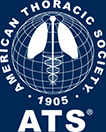Just two years ago, when my husband CP was first diagnosed with Idiopathic Pulmonary Fibrosis —and we were still struggling to recall and pronounce those new words—we were invited to our first Pulmonary Fibrosis Support Group gathering, sponsored by the University Interstitial Lung Disease Clinic. It happened to be their annual picnic. We knew very little about the disease at the time, but I’d done some reading. In the car on the way to the picnic that day we were both quiet. I debated, then decided to mention what was on my mind. I glanced at his healthy profile behind the wheel and said, “I wonder if there’ll be anyone on oxygen there.” As a nurse it’s something I’m used to seeing, but for C, I knew the sight (and implications) could be a shock that would fill him with dread. I added, “Some people with IPF need to use it, but only when it’s very advanced.”
A few weeks ago we again attended the University PF Support Group Annual Picnic. This year C was one of the elephants in the room: the guy with oxygen flowing into his nose via plastic tubing from his little black humming portable concentrator on a rolling cart. The concentrator was a gift from the family of another man who attended that first picnic. He and C were both newly diagnosed the summer of 2016. Echoing the sentiments expressed by lung transplant patients, our gratitude for the gift is tinged with sadness because that gentleman is no longer with us.
Initially C only needed oxygen to fly. He’s recently had an acute exacerbation, and suddenly needs oxygen day and night. It feels like crossing a threshold into another chapter of life. He can’t just grab the car keys and run out to do an errand. And it’s such a concrete, visible sign of an otherwise invisible condition. Neighbors and friends used to say to me, “He looks fine!” as if they didn’t believe he had a serious condition. They don’t say that any more. Expressions of surprise and maybe pity cross their faces when they first see him now.
Because he was using a portable concentrator when his home concentrator was delivered, they didn’t provide any small tanks which can be carried in a backpack. We didn’t know that was an option, until the clinic nurse told us.
There were other things we “didn’t know we didn’t know” but had to learn, like the significance of pulse vs continuous flow. How to operate an oxygen tank should the power fail. How to notify the power company in advance of his dependence on it. What a pulse regulator is, or that we should request a prescription for one. How to tell how long a small tank would last, or that there’s no easily understood way to communicate with the supplier about size and capacity of tanks. From a PFF Voices Support Group telephone session, we learned the importance of monitoring and adjusting the amount of oxygen to activity, rather than a prescribed number of liters per minute. It also increased C’s attention to oximeter readings and the significance of increased heart rate and the Perfusion index.
There are practical questions that come up— like is it unsafe to use a gas barbecue or blow out birthday candles when you’re on oxygen? How do you know how much oxygen you need when you’re sleeping? There are considerations like needing an aisle seat at the theatre, and where the airlines want you to sit on an airplane.
It’s not like we haven’t heard discussions about oxygen use and it’s varied delivery systems at support group meetings. But until you need it, the information isn’t relatable or retained. Suddenly other oxygen users are your buddies. In a nutshell, relying on oxygen makes you a member of a whole new club.
Patient Resources
Oxygen Therapy Patient Story



